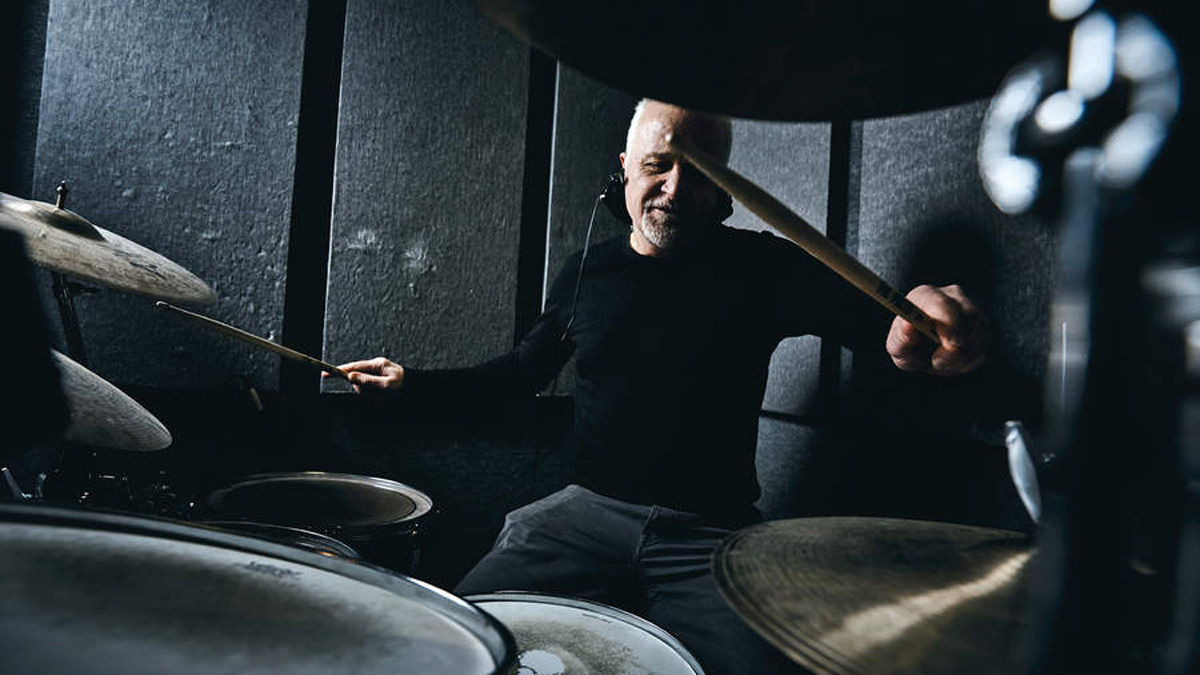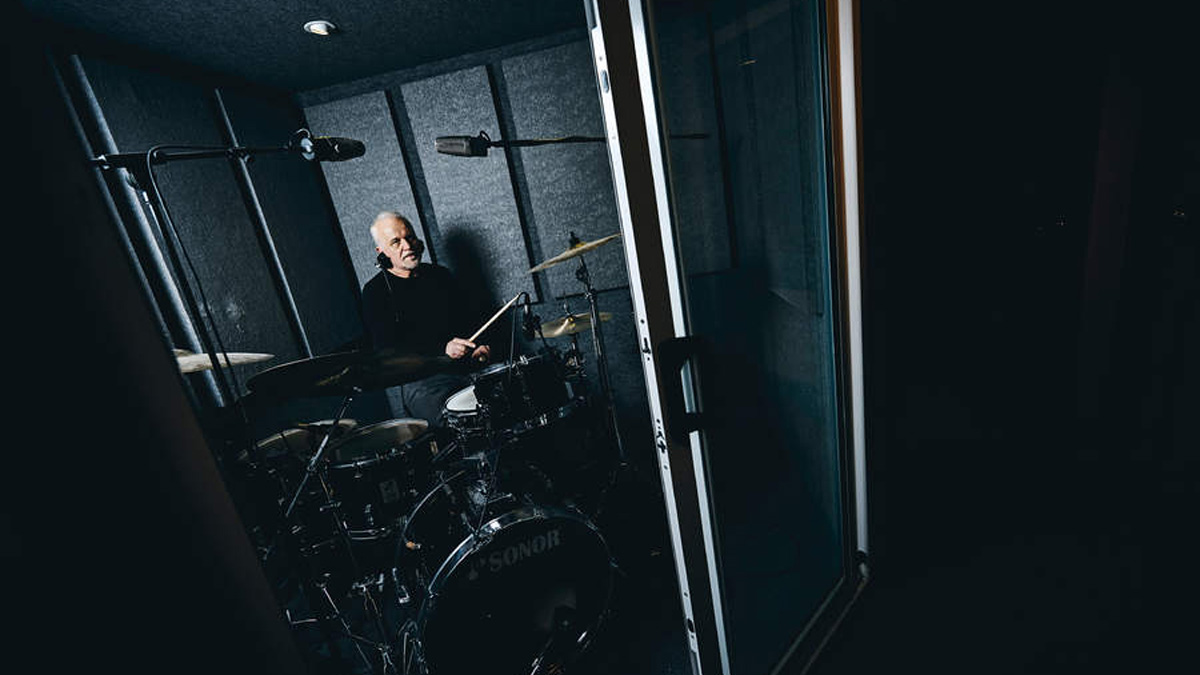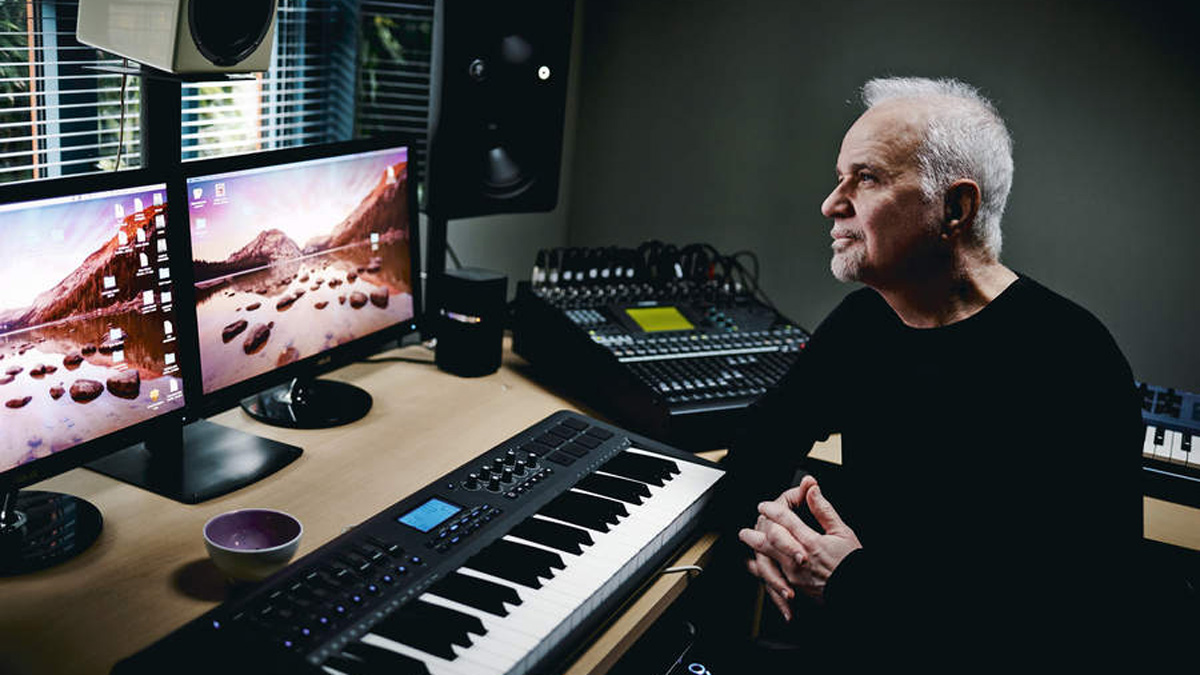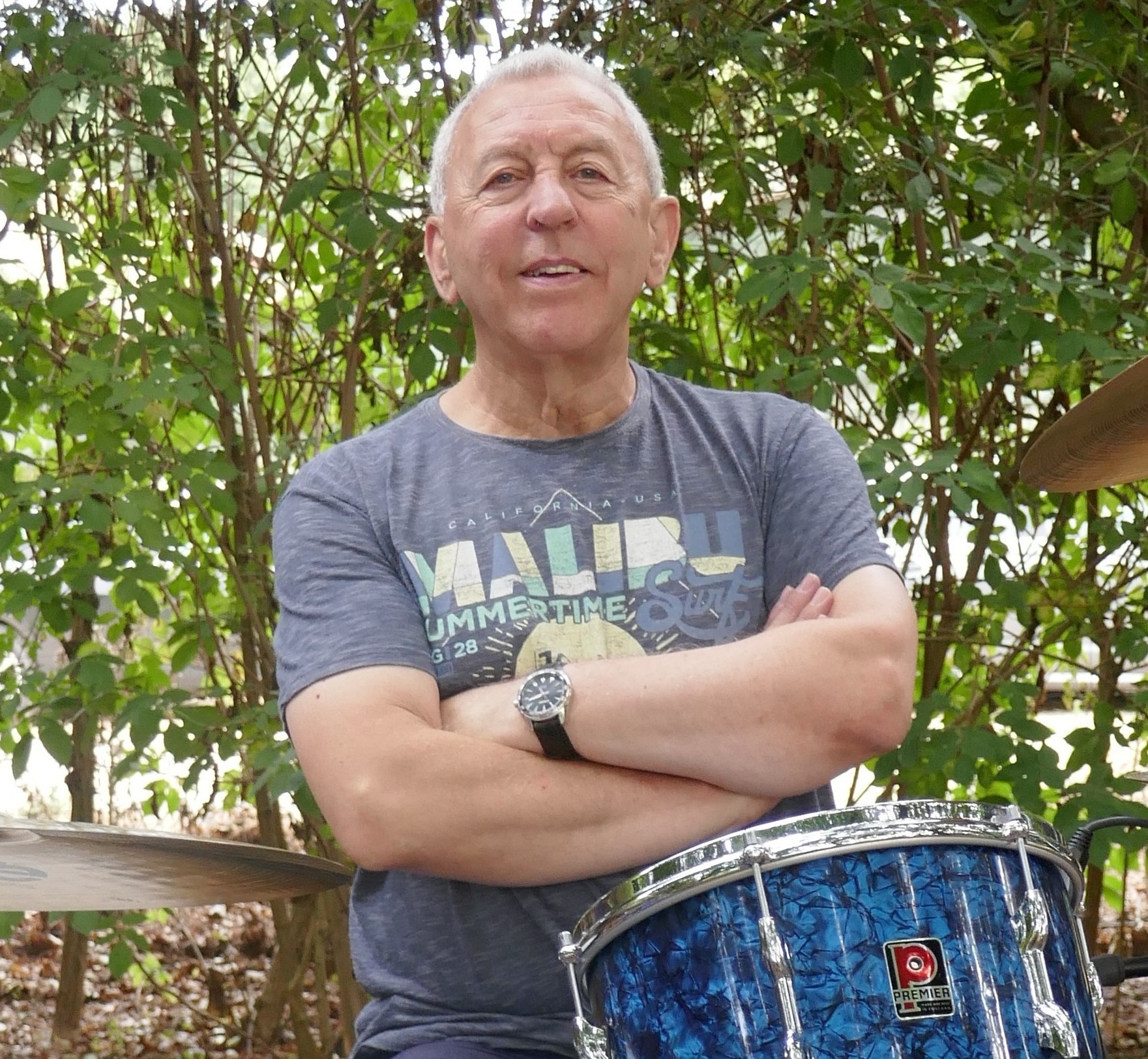Cockney Rebel and session ace Stuart Elliott: "Kate Bush is always the first name I mention… even John Lydon can’t say enough good words about her"
Elite drummer reflects on a charmed session career

“I was bashing pots and pans at three"
Just being the drummer on Kate Bush’s Wuthering Heights, Babooshka and Running Up That Hill would be enough to seal Stuart Elliott’s place among musical royalty.
But recording numerous albums with the UK’s most original female star is the icing on the cake for this London veteran whose CV reveals a dazzlingly broad range of rock and pop artists.
Growing up in a drumming family, Stuart’s calling was never in doubt and he found success early on as the flamboyant stylist in Steve Harley’s art-rock Cockney Rebel. Characteristically for the adaptable Elliott, he is still mates with Harley after four decades and in 2017 the band toured extensively and topped the bill on Glastonbury’s Avalon Stage.
The original Cockney Rebel disbanded in 1977, by which time Stuart had already impressed sufficiently to be invited to appear on Al Stewart’s Year Of The Cat - a Number One album in the USA. This quickly led to him becoming a session regular, notably teaming up with the still-teenaged Kate Bush on her first album, crafting an extraordinary alternative vision, a million miles removed from the punk-dominated late 1970s.
There followed 12 albums with the feted producer Alan Parsons, attracting substantial followings in Germany and the USA. Concurrently Elliott became Bush’s most dependable studio drummer, all the while steadily building a stunning CV, both live and in the studio.
There were, for example, appearances with Ringo and Macca, gigging and recording with rock giants including Roger Daltrey, Jack Bruce, Eric Clapton, Elton John, Tina Turner, Alice Cooper, Debbie Harry and literally dozens more. A UK Number One hit with BA Robertson (Bang Bang, 1979) and a Number One American country hit with Kenny Rogers, Morning Desire (1985), are just two more examples underlining the diversity of Stuart’s work.
"Today he’s as keen as ever to learn and improve. During a wide-ranging chat at his London studio, where he works on remote drum tracks and self- composed library albums, Rhythm gets a glimpse into the stellar career of this unassuming artist.
Stuart, your dad Alexander and brother Lindsay are both drummers, and you started very young.
“I was bashing pots and pans at three and I was around when dad was practising in the front room. He’s 94 now, he retired about 25 years ago. He had three gigs a day with radio broadcasts. During my formative years hanging with dad I heard a lot of Buddy Rich.
"The drummer who really captivated me was Joe Morello. I still aspire to playing little 5/4 jazzy beats. Dad took me to see him at the New Victoria Theatre.”
During my formative years hanging with dad I heard a lot of Buddy Rich. The drummer who really captivated me was Joe Morello.
So you always wanted to be a drummer?
“Right from primary school, never any doubt. But I left school at 15 and for a while I worked in shops in the King’s Road when it was the hippest place. Dad took me down to Drum City in Charing Cross Road and I settled on a Ludwig Standard kit.
"The finish looked like Ringo’s. It sounded fantastic and I used it on the first two Cockney Rebel albums.”
Cockney Rebel hit the big time quickly, in 1973.
“I was in a post-school amateur band and I asked one guy if he knew of any other bands looking for a drummer. He knew a bass player who had a friend who was looking. And that friend was Steve Harley. So that was pure luck.
"I’m still with Steve, the only original left. I leave and come back. He always welcomes me and I always have something new to bring. That excites him, he loves new stuff and improvisation.”
You played some adventurous parts on the singles Judy Teen (1974) and Here Comes the Sun (1976).
“We just kicked ideas around as a band. That’s the great thing about that era, you could do whatever you liked, within reason. We always worked hard. But I don’t play [Here Comes The Sun] exactly like that any more - those wild triplets round the toms came from listening to Billy Cobham.”
It takes guts to do something like that, especially in the studio.
“Well Steve was the producer and he just loves madness. Now when we do it, I play the same pattern on the bell, but in the triplets section I copy Ringo - straight on the snare. I thought, why did I not do that the first time? It’s perfect. Abbey Road blows me away, particularly Ringo. What a fantastic drummer.
"A highlight of my life was playing with Ringo, at the Michael Jackson and Friends Live Concert in Munich (1999). Playing that fill in A Little Help From My Friends. It’s one of the best fills ever and I had shivers up my spine just playing and listening to the musicality of it. Fills like that are worth their weight in gold.
"Ringo swanned in, sang two songs and jetted off. I had two top-toms and he joked to me, during run-through: ‘That’s too many toms [laughs]!’ I was just gobsmacked to be in the same room as him.”

The Rebel goes solo
Back to Cockney Rebel. Singular Band on The Psychomodo (1974) has some really funky, fun stuff going on.
“That was an example of me looking for an original beat to play, chopping it up and putting the off-beat in different places and coming back in on the hi-hat. I was besotted with Frank Zappa. [Zappa’s drummer] Ralph Humphrey blew me away on ‘Dinah-Moe Humm’ [Over-Nite Sensation, 1973].
"He inspired me to use the bass drum as part of a fill, which I still do. I’ll do a roll on the toms and when I get to the floor tom I will share it with the bass drum. Or I’ll start with the bass drum, rather than all toms.
“The biggest Cockney Rebel album was Best Years Of Our Lives (1975) - it’s slightly more polished than the rest. Make Me Smile (Come Up And See Me) [a Number One UK hit] is on that. It’s an upbeat song, but the lyrics are bitter, about the split up of the first band.”
That album is where famed producer Alan Parsons comes in?
“Yes, that’s where I met him, a vitally important meeting.”
And he promoted your session career, starting with Al Stewart?
“Year Of The Cat [Al Stewart, 1976] was my first big session. Me and George Ford [bass] who was in Cockney Rebel too. Alan was the producer. The chemistry was definitely there, it’s one of the most memorable albums I ever played on. Beautiful acoustic guitar playing by Peter White and Al, with Peter Wood on a big steam piano! We just locked in, no click tracks, just a dream to play on.”
After the wildness of Steve Harley, your playing on Year Of The Cat and the follow-up Time Passages (1978) shows real maturity. What drumming influences do you remember?
“One thing was on Year Of The Cat there’s a little fill I keep repeating, inspired by Ricky Fataar on the Beach Boys’ Holland (1973). Another thing he did was to start [a fill] on the hi-hat. I did that for years.”
This all this led to Kate Bush.
“We recorded The Kick Inside in 1977. That was ‘in-family’ as well. Her producer, Andrew Powell, did the orchestral arrangements on Cockney Rebel’s Sebastian and Death Trip (1973). He wanted to use me and Duncan Mackay from Cockney Rebel and Ian Bairnson [guitarist] and David Paton [singer] from Pilot. So basically the first Kate Bush album band was half Cockney Rebel and half Pilot.”
Do you remember the first time you met Kate?
“Vividly, yes! It was in Air London, the main studio. She was 19 and I was 24, quite a leap at that age. She was this tiny little hippy chick. Except when she sat behind the piano and played these songs, we went, ‘What?! F**king hell!’ Dave Gilmour of Pink Floyd discovered her and EMI kept her in Artist Development until she was older. But she had written those songs when she was 16!
“She was incredible. She sat at the piano and sang and played at the same time on the backing tracks. It was all live. We did three tracks a day, rattled through them. It was easy as anything, because it was so inspiring. The songs were so quirky and interesting, it was an open palette to invent and complement great songs.”
Andrew Powell hit on the right mix of musicians.
“He did. He had guts, everyone did in those days. They would book an expensive studio and book a lot of musicians and if it all goes tits-up that’s a lot of money down the drain. But he is very much old-school, he wants everything live, even the vocals.
"Though I think Kate might have re-approached her vocals and done a lot of backing vocals. But the basic track went down live, so it’s virtually a finished product as soon as the backing track has gone down.”
The structure of Wuthering Heights is not straightforward. The chorus is stretched, but rather than fill, you leave space so it’s hardly noticeable.
“Thanks, but I’m not sure it would work any other way. It’s only odd because of the lyrics. Kate wouldn’t write in time signatures deliberately, she would just write, and whatever it is, it is. And that just happened to be an extra beat.
“Out of everyone I’ve worked with she is always the first name I mention, because she always gets a positive response. She has so much respect, even John Lydon can’t say enough good words about her!”

The Alan Parsons impact
How did her way of working change as technology advanced and she became a huge star?
“Hounds of Love (1985) is four albums down the line and it’s a different form of production, a one-man-at-a-time job. So you had to come in and play to Fairlight-sequenced parts. It was more bitty, not live at all. It’s a cracking album though. There are no hi-hats or cymbals.
"That was a challenge, I would look for things to play in the higher register that would give it motion - little hand drums, not shakers or anything too obvious. It’s all acoustic drums.
“On Sensual World (1989) I was using the Akai S3000 and Simmons pads, triggering sounds. She wanted different bass and snare sounds on every track. But I used real hi-hats and cymbals. It screwed my technique up though, playing pads for three years. The first gig back with Alan [Parsons] I couldn’t play rim shots any more. So [I thought] sod that, and got back to my acoustic drums!”
The Alan Parsons Project became a major part of your life?
“Kate and Alan were recurring clients. The first album I did with the Project was Pyramid (1978). There’s brilliant stuff on there. Andrew Powell did the orchestral parts. We were all the same family of guys who knew one another. Eric Woolfson was the principle composer.
"His previous claim to fame was managing Carl ‘Kung Fu Fighting’ Douglas. But he was also a brilliant composer, and because of Dark Side Of The Moon that Alan Parsons engineered, he wanted someone to make it sound good like that.”
Which Pyramid does, it has that lush Dark Side Of The Moon soundscape.
“Yes, it’s very Floyd. The weirdest thing, it was Eric’s baby, but he said why don’t we call it The Alan Parsons Project because Alan already had a name. So everyone thought it was all Alan, but he was just a backroom boy. Eric would have liked more limelight, understandably. But having said that, Alan made it happen. Without Alan it would have been any old album – he had that magic touch.”
There are so many other artists you’ve worked with. American country legend Kenny Rogers (Heart Of The Matter, 1985) sticks out. How did that come about?
“George Martin again. I did Give My Regards To Broad Street [Paul McCartney, 1984] and after that George called me for a few things. We went to Paris with Mo Foster on bass and Ann Dudley on synths. John Robinson did the LA sessions – a hard sound, everything in your face and really ‘on’ it. My stuff was less hard.
"The title song, Heart of the Matter, is brushes. When you get Kenny’s voice it doesn’t matter what it is, it’s so colourful, the sound and delivery are fantastic.”
Ringo swanned in, sang two songs and jetted off. I had two top-toms and he joked to me, during run-through: ‘That’s too many toms!’ I was just gobsmacked to be in the same room
Sifting through your biog I also see The Who’s Roger Daltrey and Cream’s Jack Bruce - a couple more real legends.
“I got the Jack Bruce gig from [guitarist] Clem Clempson who was in the Roger Daltrey band when we did some gigs in America, Madison Square Garden, immediately before. Playing ‘Won’t Get Fooled Again and Substitute with Roger Daltrey - wow, that was wicked. It’s what I grew up with.
"I didn’t used to do a lot of that [Keith Moon flamboyance], but when there is an opportunity and that is what’s required… Substitute, I played that very differently [from Keith].
“Jack went through drummers like there’s no tomorrow and I was just another in a long line. We did a few gigs and he got me out to Germany to record. Ships In The Night (1993), is a duet with Maggie Riley, the most beautiful song, soaring voices and lovely harmonies. I’m proud to have played on that.
"The drums are just a slow backbeat, but to no click, which is what kind of makes it. It has its own feel, which is my feel. I like where I put the snare, which is where I want it rather than being forced to put it somewhere where the click wants it.”
We’ve only scratched the surface, but is there any advice you could give to someone starting now?
“The only thing that ever worked for me, and still does when I do it, is to get out there and play live. If you are with different people on the gig, they will clock you and ask you to do something else. You have to be out there, it doesn’t matter what, say yes to whatever it is. Don’t sit in the studio all day thinking you’re gonna get loads of gigs one day, because you won’t.
“Listening is the golden rule. And if you can’t listen, if all you can hear is yourself, then you need to work on that. And the way to work on that is to play with other people. So the bottom line is doing gigs and somewhere along the way you will meet someone who will leapfrog you on to something bigger and better.”

Geoff Nicholls is a musician, journalist, author and lecturer based in London. He co-wrote, co-presented and played drums on both series of ‘Rockschool’ for BBC2 in the 1980s. Before that he was a member of original bands signed by Decca, RCA, EMI and more. ‘Rockschool’ led to a parallel career writing articles for many publications, from the Guardian to Mojo, but most notably Rhythm magazine, for which he was the longest serving and most diverse contributor.